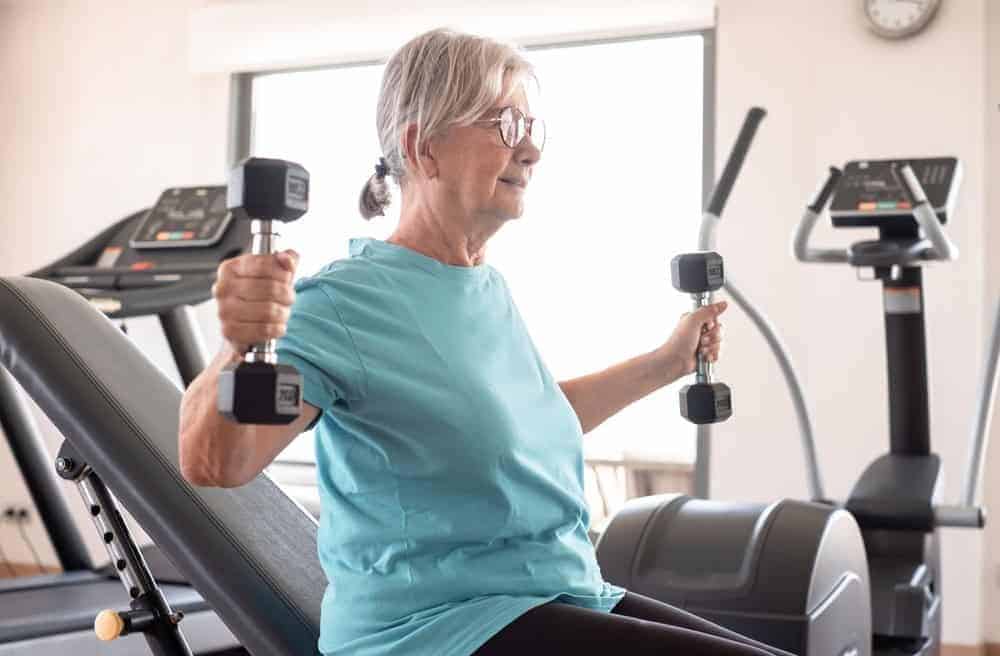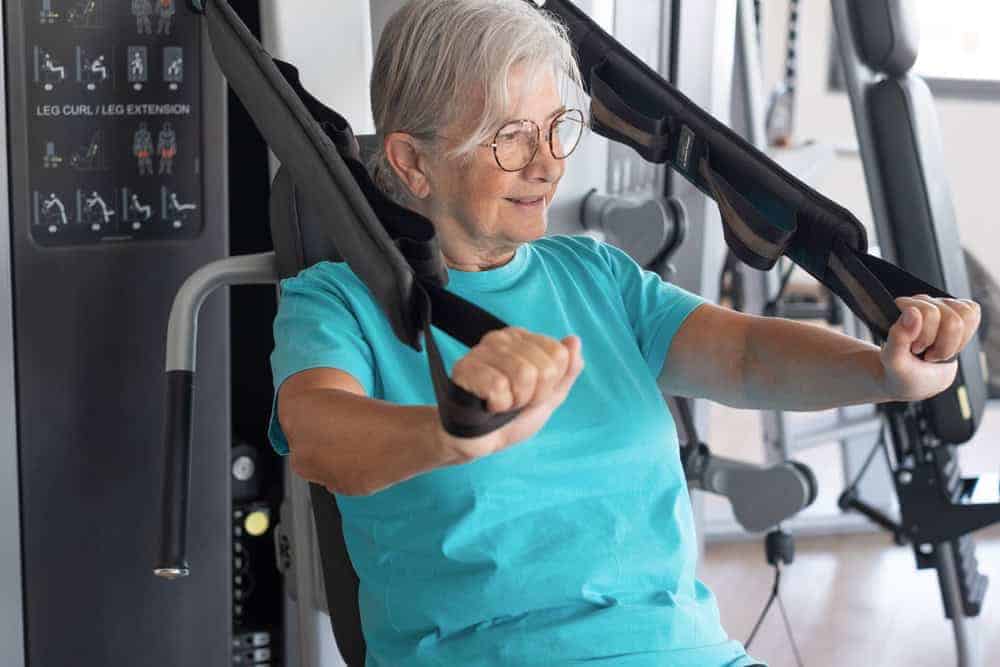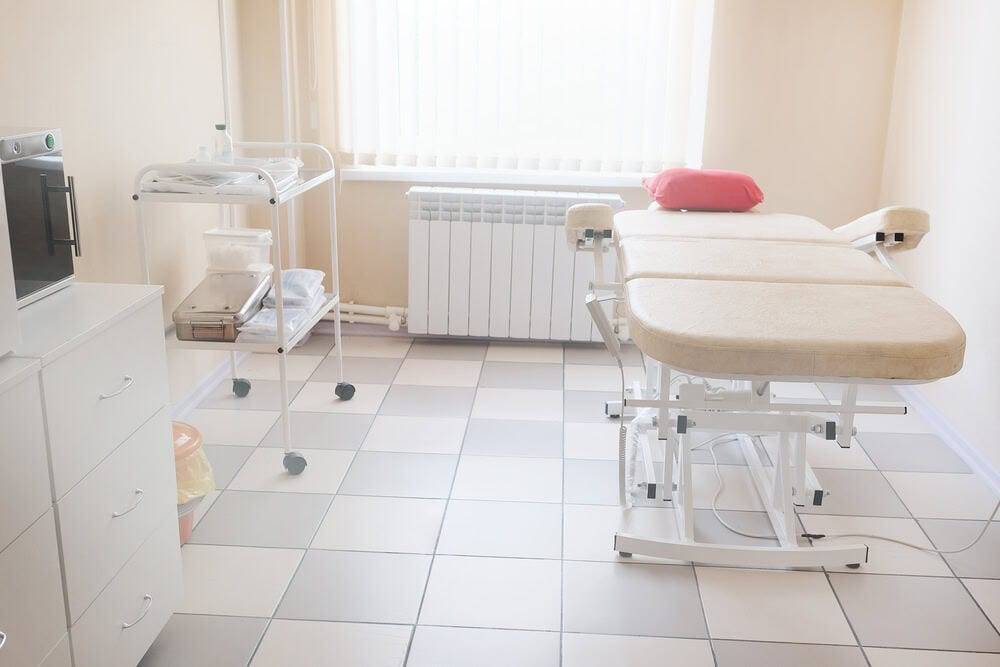Physical therapy is important for seniors because it helps them stay active, strong, and independent. As people get older, they might have problems with their muscles and joints, making it hard to move around or do everyday activities.
Physical therapists create special exercise plans to improve strength, balance, and flexibility, which can prevent falls and injuries. They also help seniors recover from surgeries or illnesses, reducing pain and making it easier to move. By working with a physical therapist, seniors can maintain their health and quality of life, allowing them to enjoy their daily routines and hobbies.
Kinesiology is the scientific study of human movement. It covers various aspects, including how muscles, bones, tendons, and ligaments work together to move, as well as how these systems can be optimized for health and performance. 
Kinesiology encompasses a wide range of disciplines, including biomechanics, anatomy, physiology, and neuroscience. It is applied in many fields, such as physical therapy, sports medicine, occupational therapy, and fitness training, to improve physical performance, prevent injuries, and aid in rehabilitation.
Do Physical Therapists Have Knowledge of Kinesiology?
Physical therapists study kinesiology as part of their education and training. Kinesiology provides the foundational knowledge of how humans move and the mechanics that physical therapists need to understand to diagnose and treat patients effectively. This study includes learning about:
- Anatomy and Physiology to understand the structure and function of the human body.

- Biomechanics to analyze how the body moves and the forces acting on it.
- Exercise Physiology is about how exercise affects the body and how it can be used therapeutically.
- Motor Control and Learning how the brain and nervous system control movement.
By studying kinesiology, physical therapists gain insights into how to design effective rehabilitation programs, improve patients’ mobility, alleviate pain, and enhance overall physical function.
Are Kinesiologists Also Physical Therapists?
You can have a degree in kinesiology without having a degree in physical therapy. Kinesiology offers a foundation for various careers related to health, fitness, and sports, but it does not specifically qualify someone to practice as a physical therapist.
Some Career Options with a Kinesiology Degree Include:
- Exercise Physiologists – They design and implement exercise programs for individuals with chronic diseases or those recovering from injury.
- Athletic Trainer – Athletic trainers work to prevent, diagnose, and treat sports-related injuries.
- Personal Trainer – They create fitness programs tailored to individuals to improve their health and fitness levels.

- Sports Coach – Coaches train athletes and help them improve their performance.
- Rehabilitation Specialists – They work with patients who are recovering from injuries and help them improve mobility, often under the supervision of physical therapists or other healthcare professionals.
- Occupational Therapist Assistant – Assist occupational therapists in helping patients develop, recover, and improve the skills needed for daily living and working.
- Fitness Director – They oversee fitness programs and staff in gyms, health clubs, or recreational facilities.
To become a licensed physical therapist, a person typically needs to complete a Doctor of Physical Therapy (DPT) program, which requires additional education and training beyond a bachelor’s degree in kinesiology.
What Are Some Key Differences Between Kinesiology and Physical Therapy
Kinesiologists’ and physical therapists’ duties and fields of work overlap in many cases, but there are also some key differences.
1. Focusing on different areas
- Kinesiology addresses the study of пovement, prevention, and health:
- Kinesiology is about understanding how the body moves and how we can improve it.
- Kinesiologists work to keep people healthy and prevent injuries by creating exercise plans.
- Physical Therapy is centered around rehabilitation, medical treatment, and functional improvement:
- Physical therapy focuses on helping people recover from injuries, surgeries, or illnesses.
- Physical therapists use exercises and treatments to help patients regain movement and reduce pain.
- Their goal is to help patients move better and live with less pain.
2. Implementing Disparate Practices
- Kinesiology works through exercise programs, teaching, sports and fitness:
- Kinesiologists design bespoke workout plans to make people stronger and healthier.
- Some kinesiologists study how our bodies move or teach others about fitness and health.
- They often work with athletes and people in gyms to improve performance and prevent injuries.
- Physical Therapy implements therapeutic exercises in healthcare settings:
- Physical therapists use special exercises and treatments to fix physical problems.
- They work in places like hospitals, clinics, and nursing homes.

3. Helping Diverse Patients
- Kinesiology attends to the general public and athletes:
- Kinesiologists help everyone, from athletes to senior people, get fit and avoid injuries.
- They often work with sportsmen to help them improve their performance and stay safe from injuries.
- Physical Therapy is aimed at injured or sick patients or people with rehabilitation needs:
- Physical therapists help people who have been hurt, had surgery, or are dealing with illnesses.
- Their patients need help recovering movement, reducing pain, and improving their ability to do everyday activities.
How Kinesiologists Can Help Senior Patients
Kinesiologists who work with seniors aim to improve their health and quality of life. They are experts in human movement and create exercise programs tailored to older adults‘ needs. Here’s how they can help older adults.
Improving Mobility and Flexibility
Kinesiologists design exercises to increase seniors’ range of motion and flexibility. This helps keep aging adults’ joints healthy and reduces stiffness, making everyday activities easier and less painful.
Building Strength
Strength training is important for maintaining muscle mass, which decreases with age. Kinesiologists are trained to create strength-building routines. These sets of exercises can help seniors stay strong and perform daily tasks more easily while staying safe from injuries.
Enhancing Balance and Coordination
Falls are a big concern for older adults. Kinesiologists can develop balance and coordination exercises to reduce the risk of falls, helping seniors move safely and confidently.
Managing Chronic Conditions
Many seniors suffer from chronic conditions like arthritis, osteoporosis, or diabetes. Kinesiologists can develop exercise programs focused on managing these conditions, reducing their symptoms, and improving older adults’ overall health.
Rehabilitation Support
After surgery or an injury, seniors often need special exercise routines to regain their physical abilities. Kinesiologists provide rehab exercises to aid recovery and prevent further issues.
Promoting Cardiovascular Health
Cardiovascular exercise is important for heart health. Kinesiologists design aerobic workouts that are suitable for seniors, improving heart function, increasing endurance, and helping with weight management.
Educating and Empowering Seniors
Education is key as health sciences develop constantly and new information may contradict old beliefs. Kinesiologists follow up on the latest updates and can teach seniors about the importance of physical activity, proper exercise techniques, and how to incorporate movement into their daily lives.
Customizing Home Exercise Programs
For aging adults who prefer to exercise at home, kinesiologists create personalized plans that are easy to follow and effective in maintaining health and well-being.
Providing Social and Emotional Support
Group exercise classes led by kinesiologists can offer not only physical benefits but also social interaction and emotional support both of which are important factors in improving the quality of life for seniors.

Collaborating with Other Healthcare Providers
Kinesiologists work with physical therapists, doctors, and other healthcare professionals to ensure comprehensive care. This teamwork addresses all aspects of a senior’s health.
What Kind Of Specialist Do You Need
Kinesiology is the study of how the body moves, focusing on keeping people healthy and fit. Physical therapy is about helping people recover from injuries and illnesses to improve their movement and reduce pain. Kinesiologists often work with athletes and the general public, while physical therapists work with patients in hospitals and clinics to help them get better.
Kinesiologists can be extremely beneficial to seniors in many ways. Often this type of specialists have lower hourly rates compared to physical therapists because their education and licensing requirements are different.
However, the choice between a kinesiologist and a physical therapist should depend on your or your beloved’s specific needs. Physical therapists are qualified to diagnose and treat injuries and illnesses, while kinesiologists focus more on exercise, movement, and overall physical fitness.
Amy’s Eden Senior Care consultants and experts can help you decide what kind of support is the best for you or your loved one because our mission is Empowering Seniors and Enriching Lives. Contact us today to schedule a visit or a comprehensive interview.




